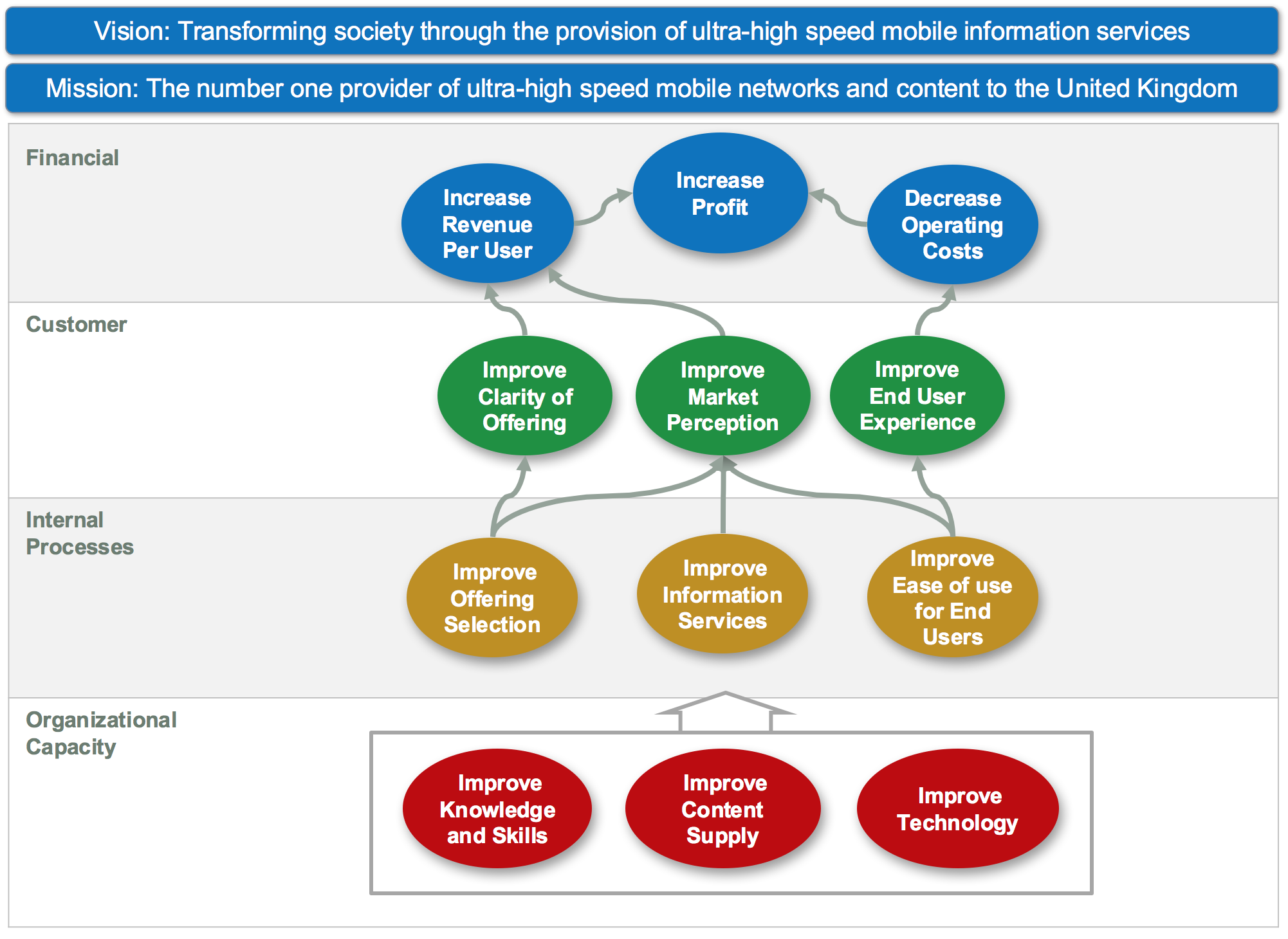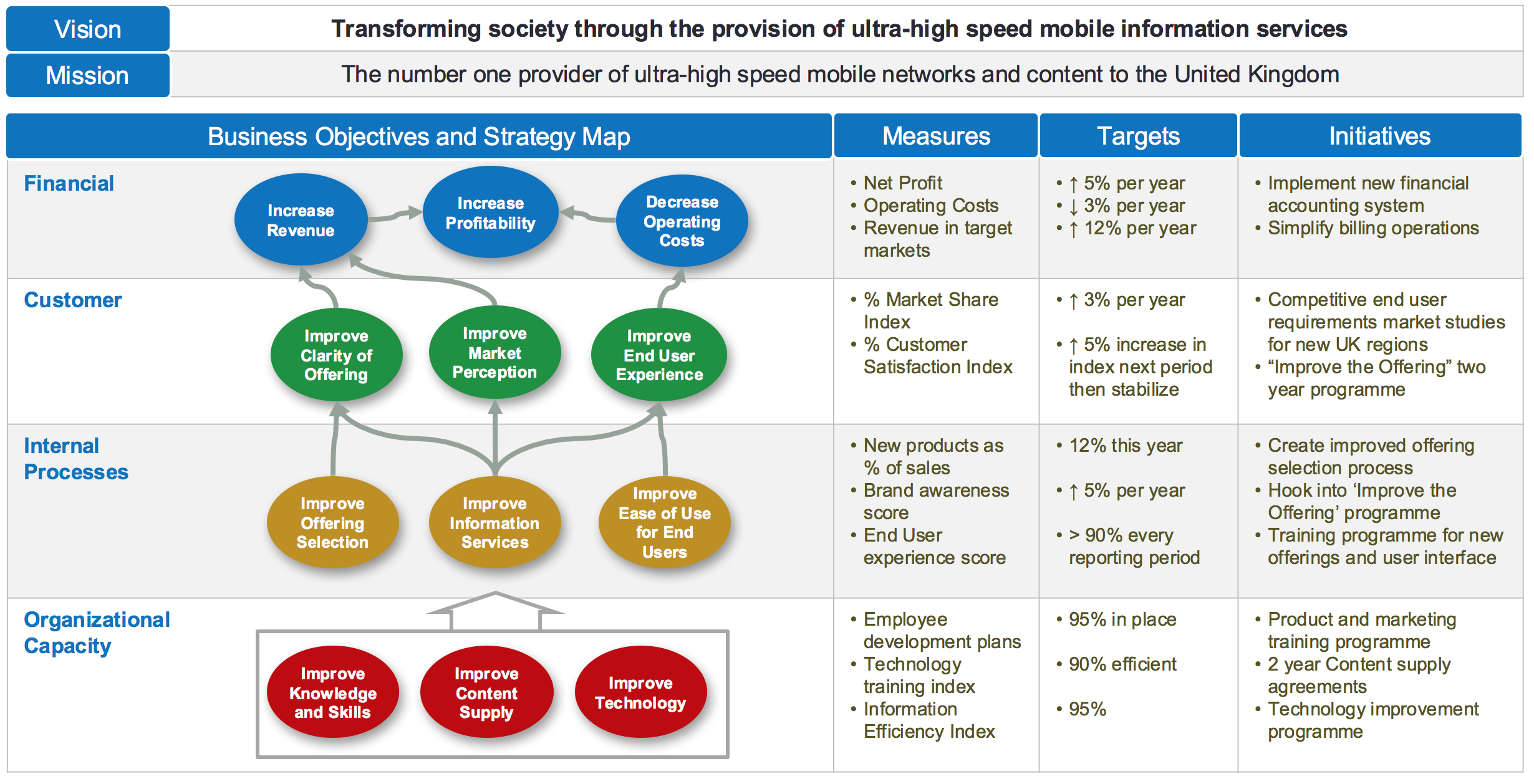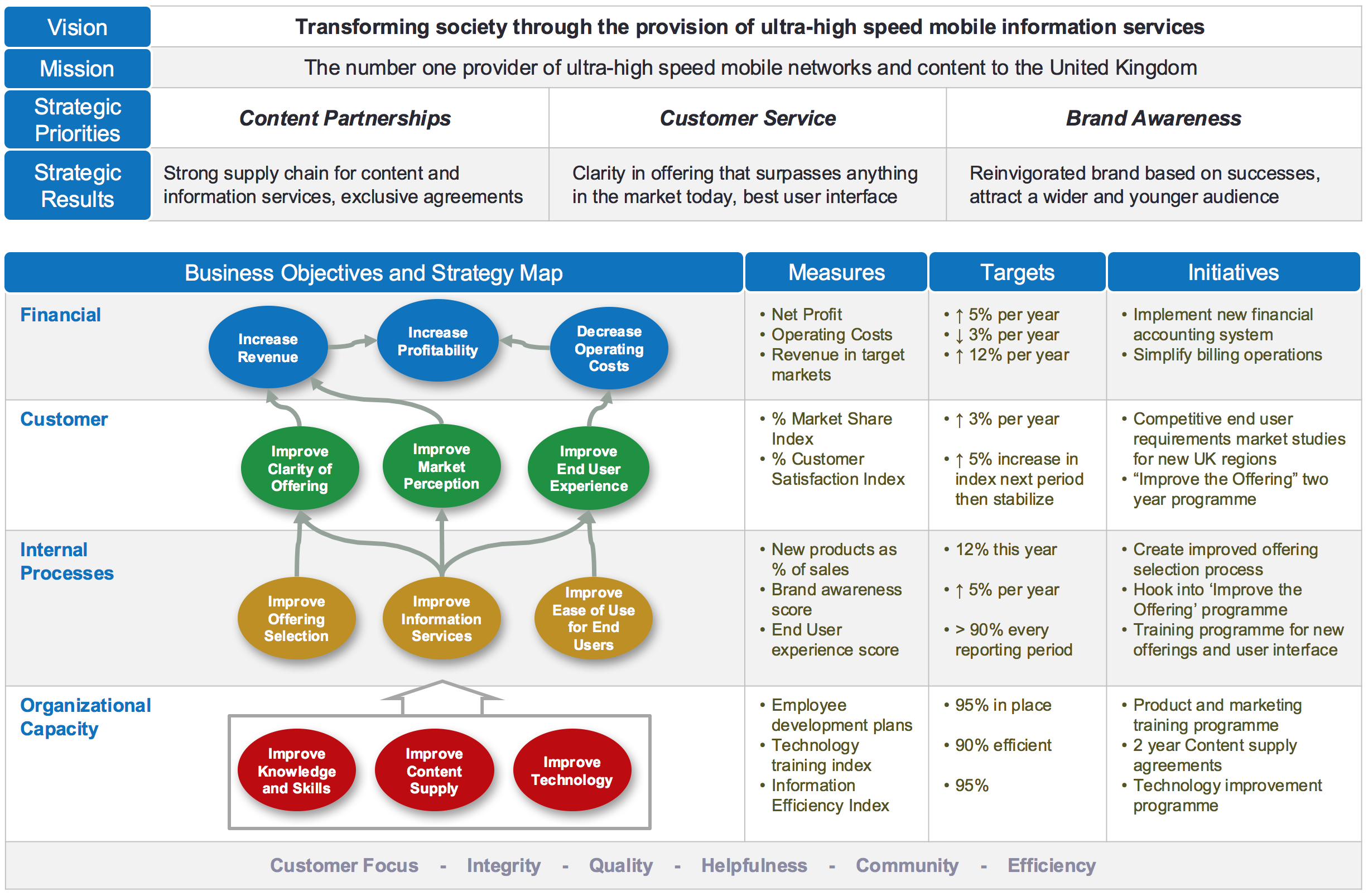A Balanced Scorecard is not just a scorecard. When designed properly it can provide an excellent management tool to help keep businesses and organisations on track. It is interesting to note that ‘scorecard’ is actually a bit of a misnomer. It is a hang-over from the early Kaplan and Norton days when the balanced scorecard was first introduced. To be truly effective, a balanced scorecard will concentrate on objectives rather than ‘scores’. The scores are important, but only in the context of understanding what a business or organisation wants to achieve, rather than how to measure things that may or may not matter. The following balanced scorecard example will demonstrate how this works.
It is, however, hugely important that your Balanced Scorecard is managed effectively. To do this you should look at a Balanced Scorecard Software solution like Spider Impact.
Typically a Balanced Scorecard will start with a set of Objectives arranged in a specific way to demonstrate how improvements/investments made in infrastructure, people or processes will have a positive impact on customer satisfaction and/or finances. This is achieved through a Strategy Map, an example of which can be seen below. Download more examples of templates here: Strategy Map Templates and Balanced Scorecard Templates
It is also worth noting that a good strategy map will include both a vision statement (what we aspire to do) and a mission statement (what we actually do). This way the reader can see straight away that the objectives contribute to what the organisation as a whole is trying to achieve.
Once an organisation has clearly stated what it is trying to achieve, then the next stage is to determine whether or not they are succeeding in their journey. It is at this point that performance measures (or KPIs) are required with accompanying targets. Each objective should have at least one performance measure and target. Often they will have more than one. As a rule of thumb, we advise that there should be no more than three performance measures for each objective. The key here is to be accurate but not to over-burden the organisation with too many measures. This is a good reason to call your performance measures Key Performance Indicators. They are ‘key’ to what you are attempting to measure. The resulting scorecard might end up looking like this:
It is only when an organisation knows what it wants to achieve and how to measure success that it can turn to what they can do to enable the change. That is, what projects are required to drive change. Projects or initiatives are often referred to as the ‘engine that drives change’ in the language of the balanced scorecard. It is this area more than any other that is different to other approaches. Identifying projects/initiatives comes at the very end of the process. So the next stage might look something like this:
The balanced scorecard shown above is typical of the output expected from a small company. However, for medium to large-sized companies, there is usually an intermediate stage that breaks the vision down into more manageable parts. Typically this will give rise to a set of strategic priorities or themes that can be worked on by different part of the organisation. This may also result in separate balanced scorecards being generated. Cascading balanced scorecards is dealt with elsewhere, suffice to say a final tier 1 balanced scorecard including strategic priorities, might end up looking like this:
You may also have noticed that to complete the model, a set of foundational or core values has been added to the bottom of the diagram. The core values are usually described early in the process. The final model provides a single view of the strategic intent of an organisation. In a single page, it also provides information about its focus (priorities) how to achieve the strategic intent (objectives), what constitutes success (measures and targets) and what needs to be done to succeed (Initiatives). This is a Balanced Scorecard!
As a bonus, it provides a great way to communicate what the business is all about in a very easy to understand diagram. For more information on how to manage all of this information effectively, take a look at Spider Impact, the only software formally recommended by the Balanced Scorecard Institute.





